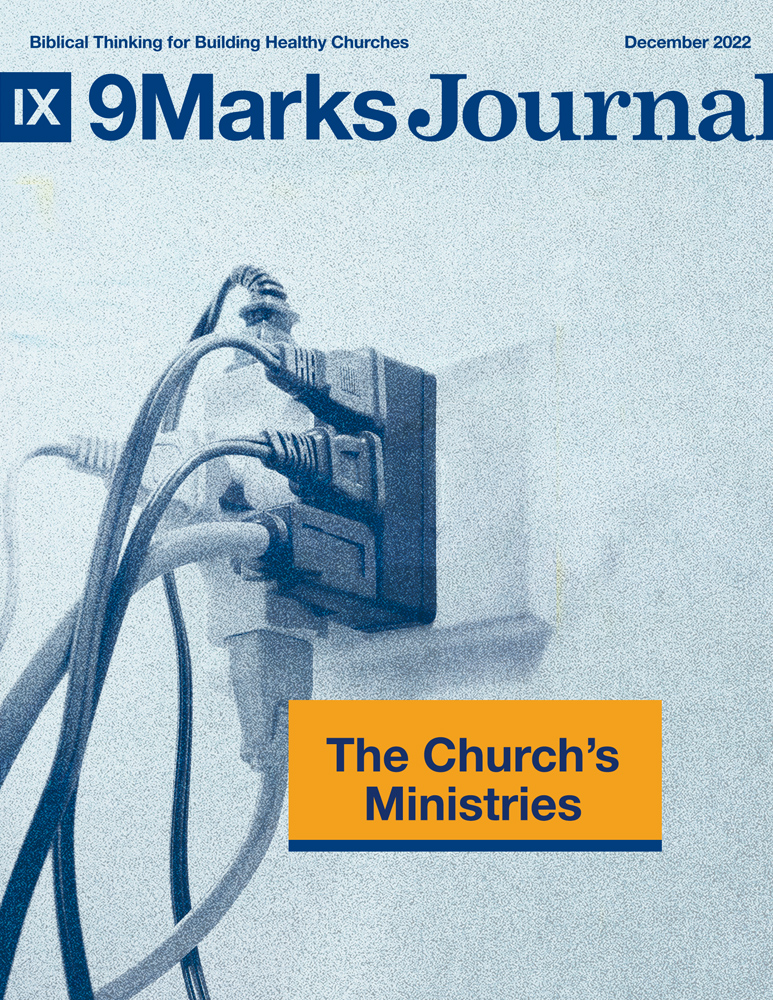Five Steps for Preventing Abuse in Children’s Ministry
December 15, 2022

December 15, 2022
In what follows, I will offer five steps for preventing abuse in children’s ministry. I offer them as a pastor whose primary area of influence is children’s ministry. If you are a pastor thinking through this issue for the first time or a church planter starting a new children’s ministry, my hope is to provide some direction and stimulate further thought. Before providing specific steps, however, I want to mention two of the many reasons why taking steps to prevent abuse should be a priority for pastors and children’s ministries.
Taking steps to prevent abuse in children’s ministry should be a priority because it’s biblical. God places a high value on children. Scripture tells us that children are created in the image of God (Gen. 1:27), that children are a gift from God (Psalm 127:3), and that Jesus values children (Matt. 18:10).
The Bible instructs God’s people to care for those who are vulnerable (James 1:27). Additionally, the Bible refers to pastors as shepherds (1 Pet. 5:2), and part of the responsibility of a shepherd is protection. In the context of a local church, there are those who can do great harm through false teaching and immoral behavior (1 Pet. 2:1–3). Wolves come in all shapes and sizes.
Taking steps to prevent abuse should also be a priority because it’s wise, loving, and just. Tragically, in a world broken by sin, children are often victims of abuse. Statistics reveal that one in four girls and one in seven boys in the United States experienced sexual abuse in the last year.11 . Centers for Disease Control and Prevention, https://www.cdc.gov/violenceprevention/childabuseandneglect/fastfact.html The true numbers are almost certainly higher as many abuse cases are unreported.
Given the prevalence of child abuse in our society, a church should never assume abuse could not happen in its children’s ministry . Wisdom, in light of the statistics, necessitates that churches take steps to prevent it. Here are five steps for preventing abuse in children’s ministry:
Church membership is not only biblical; it’s practical. This is especially true when it comes to preventing abuse in children’s ministry. In our church, we require that any adult who works with children is a member of our church and has attended for at least six months. This provides us with the opportunity to get to know our volunteers.
By the time an individual is asked or requests to serve in children’s ministry, that individual has attended membership class, completed a membership interview, been recommended for membership by the elders, and been voted on by the congregation. Prioritizing church membership allows a congregation to develop a familiar relationship with individuals before entrusting those individuals to care for children.
Establishing a screening process is a critical step in preventing abuse. Background checks are important but not nearly enough. The majority of sexual abuse cases are not reported. This means that in many cases of abuse no criminal record will exist for a perpetrator. Therefore, a thorough screening process will also include measures such as reference checks, interviews, and requiring an individual to complete an application before serving.
Prioritizing church membership and a thorough screening process are important steps. However, statistics suggest that up to 90 percent of children who are abused know their abusers.22 . Evangelical Counsel for Abuse Prevention, https://ecap.net/ Furthermore, sexual abusers groom children, leaders, and church communities in an attempt to establish trusting relationships. For this reason, additional steps are necessary.
Perhaps the most important step to take in preventing abuse is to implement a Child Protection Policy. A CPP establishes specific policies and procedures that seek to safeguard a children’s ministry from abuse. Think of a CPP like a high fence that is used to keep out those who would seek to harm a child. One key aspect of a CPP is to put in place a “Two Person Rule.” A “Two Person Rule” requires that those who work with children are never in a situation where they are isolated and alone with a child.
A good CPP will also take into consideration both power predators and persuasion predators.33 . Gavin de Becker, as cited by Deepak Reju in On Guard: Preventing Abuse at Church, 26 Power predators seek to take children by force. Persuasion predators seek access to children by gaining the trust of children, parents, and a church community through a grooming process. Persuasion predators will then leverage that trust to create opportunities to abuse children. While protecting against power predators is a concern, persuasion predators pose the greatest risk in children’s ministry.44 . Ministry Safe, https://ministrysafe.com/the-risk/ There are many resources available to help churches develop a robust Child Protection Policy. I will list a few helpful resources at the end of this article.
A CPP is beneficial only to the extent that it is known and followed. Children’s ministry workers must know what policies and procedures are in place and why. Those who work with children should be able to recognize signs of abuse and be familiar with the grooming techniques used by predators. Children’s ministry workers should also be informed about how to respond to suspected abuse cases.
Abuse prevention training can take place in many different formats. At our church we host an annual training for our children’s ministry workers. We serve dinner, pray for children and families, and spend a large block of time reviewing our policies and procedures together. We require all new children’s ministry workers to read through our CPP manual and consent to follow our policies. I make it a point to highlight specific children’s ministry policies in my regular email correspondence with our volunteers. Abuse awareness training is also part of our approval process for children’s ministry workers.
The process of taking steps to prevent abuse in children’s ministry can seem daunting. One easy step is to seek the wisdom of others. Thankfully, there are those who have thought through the issue at great length and have written on the topic. One helpful resource is Deepak Reju’s book On Guard: Preventing Child Abuse at Church. On Guard is thorough and comprehensive. It’s not only helpful in outlining the problem of abuse but also in offering practical strategies to protect against it.
Pastors and those who lead children’s ministries can also benefit by connecting with other churches to find out how the issue is addressed in different settings. Organizations such as Ministry Safe and the Evangelical Counsel for Abuse Prevention are also great resources. The value of being informed and enlisting the help of others cannot be overstated.
The steps listed above should be viewed as a starting point. There’s more that could be said on the subject of abuse prevention, especially regarding child protection policies. Ultimately, the greatest way we can care for children is by pointing them to Christ. Taking steps to prevent abuse creates a children’s ministry environment where that is possible.
Therefore, we should view abuse prevention not only as a matter of safety, but of discipling the next generation. A children’s ministry that thinks carefully about discipling the next generation must also think carefully about how to protect the children entrusted to its care.

For a church that wants to keep the main gathering primary in its discipleship and life together, what are the hallmarks of healthy ministries?
Go to Journal →